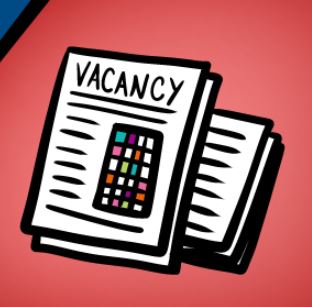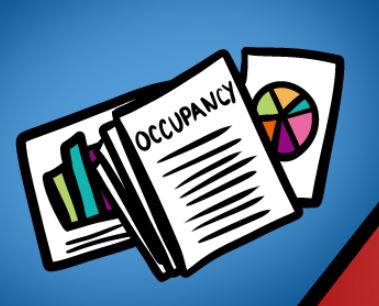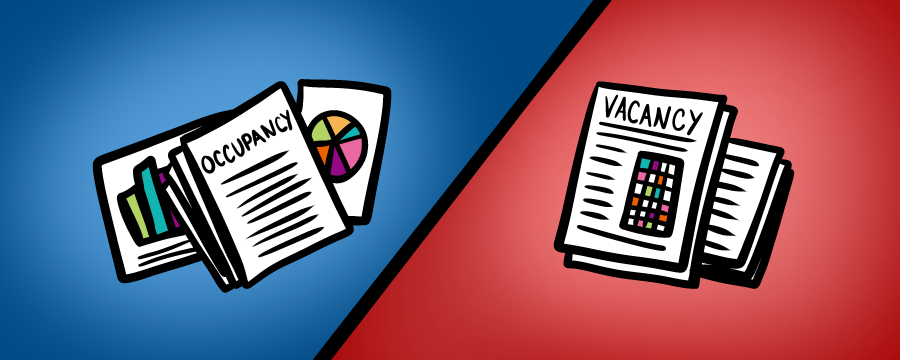Oh hey! Welcome to the community.
Occupancy Managers often do not get the attention and praise they deserve. They manage a large amount of data and details that directly impact student satisfaction. There is not a lot of research or information to draw from on Occupancy Management. Our industry has a tendency to rely on colleagues for examples of best practices as procedures are evolving with reduced budgets and an ever-changing population. We value the work of occupancy managers and would love to start the conversation. Tommy Tressler-Gelok, Director of Residential Education and Retention Specialist at Wagner College agreed to chat with us about his outlook on occupancy management and share some of his strategies for success in the next two blog posts.
Vacancy versus occupancy reports has been a popular topic on the ACUHO-I forum lately. Specifically, the conversation has centered around how you present the data and which report is more useful. This blog post is going to dive deeper into this debate.
Vacancy Reports:

Your vacancy report is a data dump that paints a picture but has no story. It’s a simplistic report that describes the dark rooms. They tell you where your students are missing. You may get data if all of your vacancies are in one hall but if they’re dispersed throughout, what is that telling you. You can use your vacancy report to fill rooms, predict attrition rates, and forecast revenue. Unfortunately, your vacancy report does not give you data about your populations. You may be able to find trends from year to year on the popularity of room types or if a particular floor seems to have a lot of departures, but you will have no further information beyond the numbers.
Occupancy Reports:

Occupancy Reports tell you a story. Tommy describes occupancy reports as “breathable, accessible documents.” Your occupancy report actually describes your communities. You can use everything from demographic information to work orders to tell the story of the students that are living with you. Whether you use that information to make an infographic, a spreadsheet or a formal report, the occupancy data will provide you with data you can share and use to move your program forward.
Beyond the Numbers:
An occupancy report provides rich and meaningful information that takes your reporting beyond the numbers. This report gives you the information that you need to be accessible and nimble. For example, when there is a measles outbreak on your campus, an occupancy report will give you a picture of what students are immunized and which communities may be at risk.
Your Residence Life staff can also use your occupancy reports. RAs play a huge part in occupancy management by ensuring residents feel seen and heard, and by following up on concerns when they arise. Occupancy reports share information with student staff that allows them to take an asset-based approach and focus on the strengths that students bring. For example, by recognizing that 53% of a community is international, one could leverage the strengths of their community to teach each other. If you could provide your staff with insights into the makeup of their communities, it could help them promote events and programs that meet the needs of their students.
At a glance, both vacancy and occupancy reports can provide you with data that will allow you to make charts and graphs that highlight stats for your communities. If you want to take the data to the next level, the occupancy report will give you the information you need to do that. Check out the next blog post for more information on leveraging your data.
Welcome to the Community. We’re glad you’re here.






